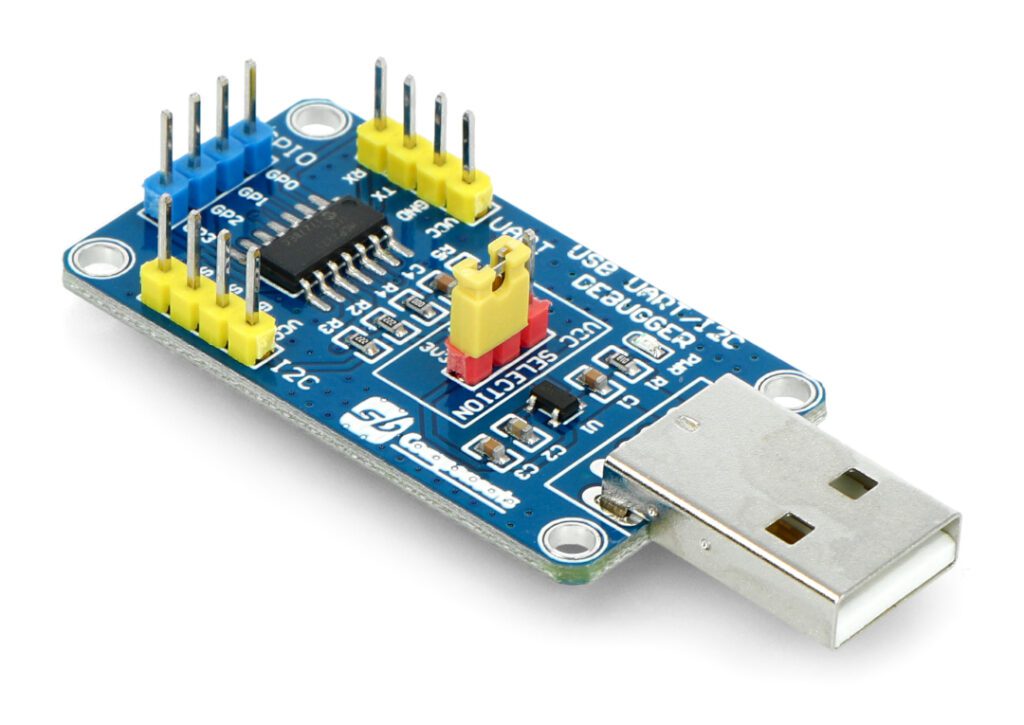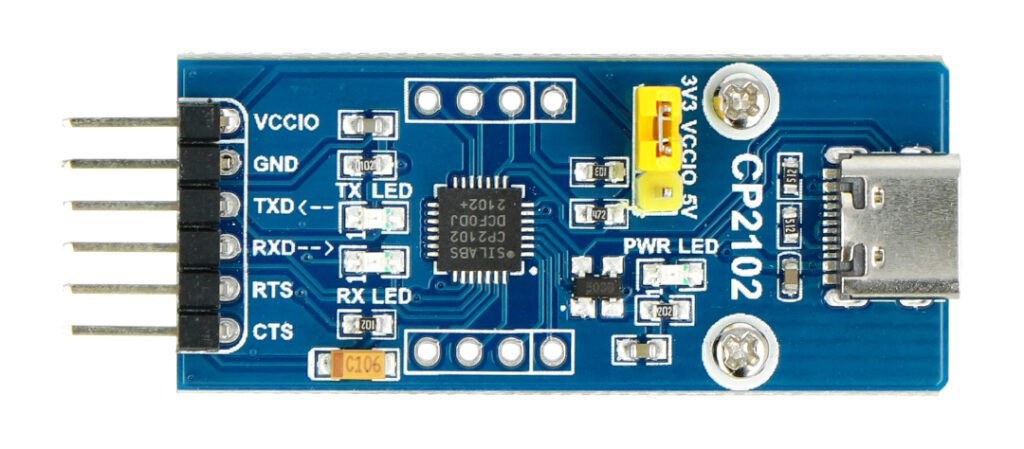Table of Contents:
Have you ever wondered how electronic devices communicate with the outside world or what makes their programming possible?
The USB UART interface is the key to understanding this mystery.
Read this article to discover how this inconspicuous component enriches the capabilities of our everyday electronics.
What is the USB UART?
Interface USB UART is a technology that enables the emulation of a serial port in computers and other digital devices.
The UART, also known as Universal Asynchronous Receiver-Transmitter’, is a simple but extremely important device in digital communications.
Its primary task is to convert data sent in parallel format to serial format and vice versa.
In the case of USB (Universal Serial Bus), UART is increasingly being used to facilitate connections between various peripherals.
Using USB UART technology, users can more easily transfer data between various digital devices.
Examples include computers, printers, scanners and even TVs and audio sets.
USB UART interfaces are extremely important in the world of technology because they enable fast and efficient communication between devices.
In summary, the USB UART is a powerful tool that enables the emulation of a serial port in USB technology, making interaction between various digital devices much easier.
Principle of operation of the USB UART interface
The USB UART interface works by emulating a serial port, which is an important role in communication between devices.
In easy to understand terms, the working scheme of the USB UART interface is to convert data from parallel to serial format and vice versa.
Consider the example of a computer and a printer communicating with each other.
Digital sentences from the computer are sent over the USB UART in the form of a string of bits.
These bits are then converted to a serial format, which is easier for the printer to transmit.
On the printer side, the USB UART again converts the data from serial to parallel format so that the printer can interpret it correctly.
This process enables efficient data transmission between devices regardless of their type.
In this way, the small but powerful USB UART technology is the key to everyday communication between our electronic devices, greatly simplifying data transfer and enabling us to use a wide range of peripherals on a daily basis.
USB UART applications - examples
Interface USB UART is widely used in various areas of technology.
An excellent example is communication between a computer and a printer, where USB UART technology enables efficient data transfer.
But this is just the beginning.
Here are some examples of the application of this extremely important technology:
- Microcontroller programming – The USB UART serves as a bridge between the computer and the microcontroller.
It supports the transmission of program code and enables debugging by transmitting data to and from the microcontroller; - connecting external devices – game controllers, modems, GPS, barcode scanners, all these devices often use USB UART to communicate with the computer or other devices;
- facilitating communication between various digital devices – for example, the USB UART enables communication between a computer and a TV or audio set.
In conclusion, USB UART technology is a key element in our daily technological life, enabling communication between a wide range of devices.
Without it, many daily tasks would be much more complicated and time-consuming.
Comparison - USB UART vs. other interfaces
Comparing USB UART with other popular communication interfaces, such as SPI (Serial Peripheral Interface) and I2C (Inter-Integrated Circuit), both similarities and differences are noticeable.
The main difference is that the USB UART is an asynchronous communication system, meaning that it does not require a clock signal to synchronize data transmission.
This gives it an advantage for long-distance communication, as it reduces signal interference that can occur in synchronous systems.
On the other hand, both SPI and I2C are synchronous interfaces that require an additional cable to transmit the clock signal.
However, these interfaces are more efficient for high-speed, short-distance communication, especially in embedded circuits.
USB UART, although slower, allows for simpler and more versatile communication, making it a key tool in a wide range of technological applications.
What’s more, the USB UART is extremely easy to use, which contributes to its popularity in a variety of everyday objects such as televisions, audio sets and printers.
Programming with USB UART - what is worth knowing?
Programming using the USB UART interface has become an integral part of modern manufacturing and software development.
Its main advantage is the possibility of seamless communication between the computer and the device that is being programmed – for example, a microcontroller.
The USB UART plays a key role here – it serves as a bridge through which data is transmitted.
Moreover, it is through it that debugging – the process of identifying and repairing errors in the program code – is possible.
Programming with USB UART ties a programmer’s computer to a myriad of different devices, greatly simplifying the software development process.
For example, USB-based UART connections are often used when programming Arduino and Raspberry Pi.
This means that this technology has had a huge impact on development and innovation in the IT industry.
Without it, the programming process would be much more complicated and time-consuming, which only underscores its importance in the context of professional and hobbyist programming activities.
USB UART converter - which one to choose?
Choosing the right USB UART module can be crucial for effective communication between devices.
There are some practical tips that can help with this task:
- Device type – before buying a USB UART module, it’s a good idea to know the type of device you plan to use.
Depending on the specifics of the device, such as microcontrollers or peripherals, different USB UART modules may be appropriate; - specifications – features such as data transfer rate, number of transmit and receive channels, and compatibility with various operating systems can determine which USB UART module will be most suitable for a given application;
- designations – USB UART modules are often labeled with the letters “FT” or “CP,” which refer to FTDI and Prolific chipsets, respectively.
It is important to check the compatibility of these chipsets with your device.
A well-chosen USB UART converter is the basis for effective communication between devices, so it is worth taking the time to analyze all the parameters before making a purchase.
How useful was this post?
Click on a star to rate it!
Average rating 5 / 5. Vote count: 1
No votes so far! Be the first to rate this post.





















